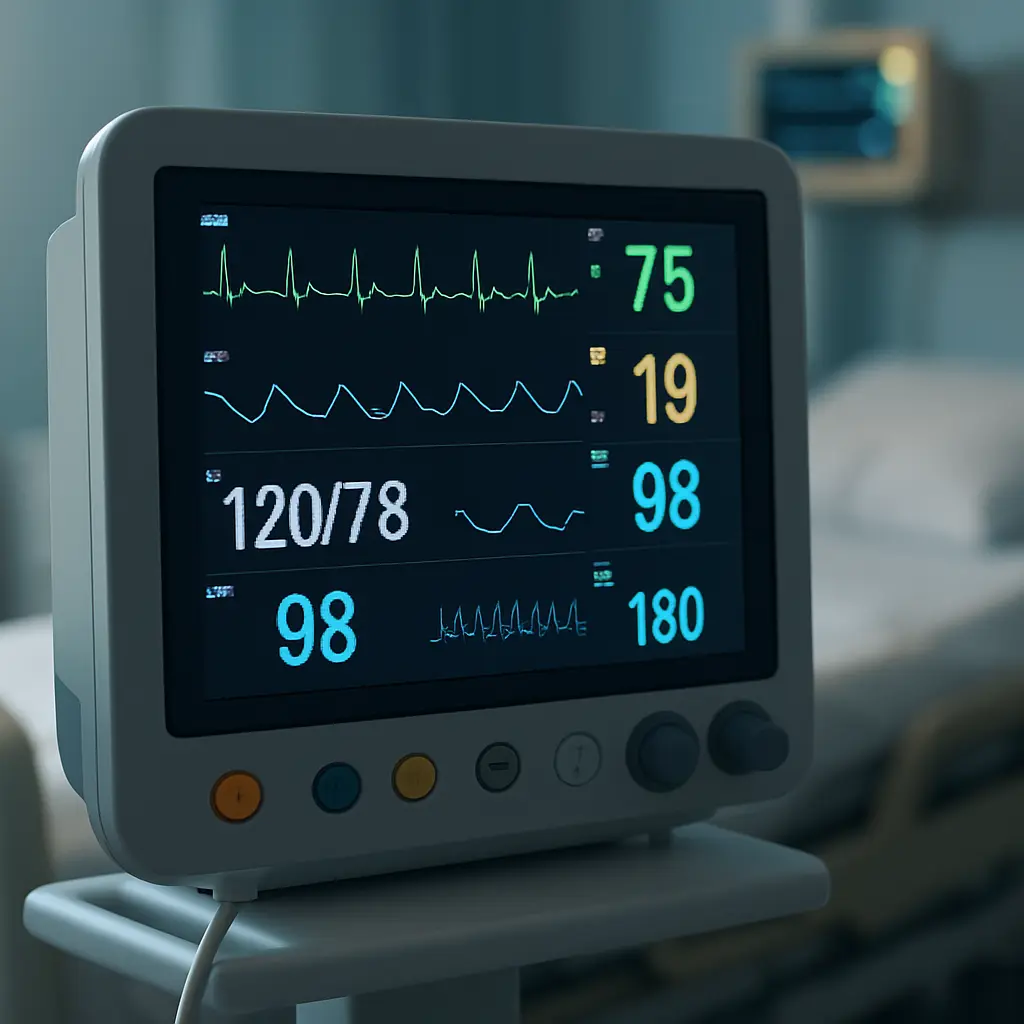Top 10 Features to Consider When Buying a Patient Monitor for Your Clinic or Hospital

Patient monitors are essential tools for tracking vital signs in real time, ensuring accurate diagnostics and effective care. With the wide variety of options available today, it’s crucial for healthcare professionals to choose the right model tailored to their facility’s needs. In this article, we’ll walk you through the top 10 features to look for when purchasing a patient monitor for your clinic or hospital.
⸻
1. Display Size and Clarity
A high-resolution, easily readable display is critical. Most modern monitors offer at least a 10-inch screen with adjustable brightness. Larger screens (12” or more) are better for ICU settings where more data needs to be visible simultaneously.
Tip: Look for anti-glare screens and touchscreen functionality for ease of use.
⸻
2. Multiparameter Monitoring Capabilities
Ensure the monitor can track multiple vital signs simultaneously, such as:
• ECG
• SpO2
• NIBP
• Temperature
• Respiratory Rate
• IBP (optional)
Why it matters: Multiparameter monitors reduce the need for multiple devices, saving space and improving workflow.
⸻
3. Portability and Mounting Options
Portable monitors are ideal for clinics and outpatient settings, while wall-mounted units suit ER and ICU use. Many models offer both desktop and wall mounting kits.
Look for: Lightweight designs with battery backup.
⸻
4. Alarm Management System
Smart alarm systems reduce alarm fatigue by prioritizing alerts. Look for customizable thresholds, escalation options, and integrated audio-visual indicators.
⸻
5. Connectivity and Data Integration
Ensure compatibility with hospital networks (HL7, DICOM), EMR/EHR systems, and external devices like ventilators or infusion pumps. USB, LAN, and wireless connectivity are now standard in high-end monitors.
Bonus: Cloud-based patient monitoring platforms enable remote access to real-time data.
⸻
6. Data Storage and Trend Analysis
Choose a monitor with sufficient internal memory for storing patient data. Long-term trend analysis (24-72 hrs) supports accurate diagnosis and treatment planning.
Recommended: Models with external USB/SD card support and data export options.
⸻
7. Battery Life and Power Redundancy
Battery backup is essential for transport and power outages. Look for at least 2–4 hours of battery life, with fast-charging capability.
Tip: Some premium models come with hot-swappable batteries.
⸻
8. Software Upgradability
Opt for monitors that allow firmware updates and software upgrades. This ensures long-term compatibility with evolving healthcare IT systems.
⸻
9. Ease of Use and User Interface
Intuitive interfaces save time and reduce user error. Features to look for:
• Touchscreen navigation
• Quick-access menus
• Multi-language support
• Customizable display layouts
⸻
10. Cost, Warranty, and After-Sales Support
Balance features with your budget. Always check warranty length (preferably 2+ years) and the availability of technical support and spare parts.
Sakomed Tip: Buying from certified distributors ensures quality and faster service response.
⸻
Conclusion
Choosing the right patient monitor is a strategic investment in patient care. From multiparameter functionality to connectivity and user-friendly design, each feature plays a vital role in improving workflow and safety. Assess your facility’s specific needs, consult your staff, and compare models wisely before making a purchase.


